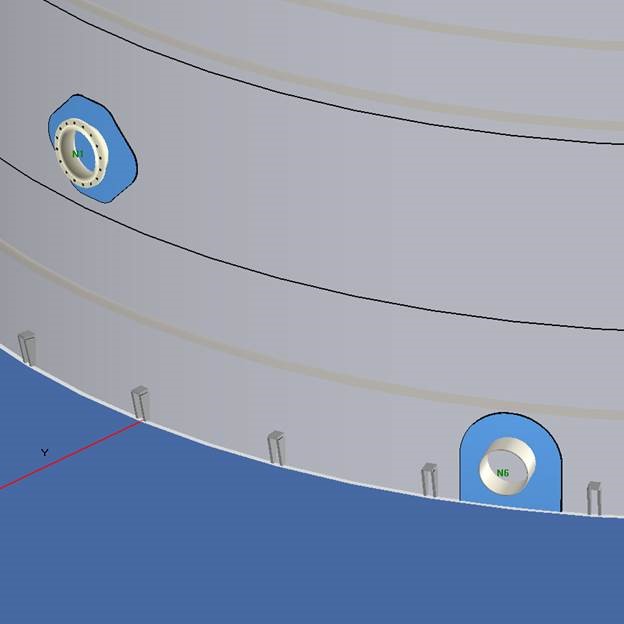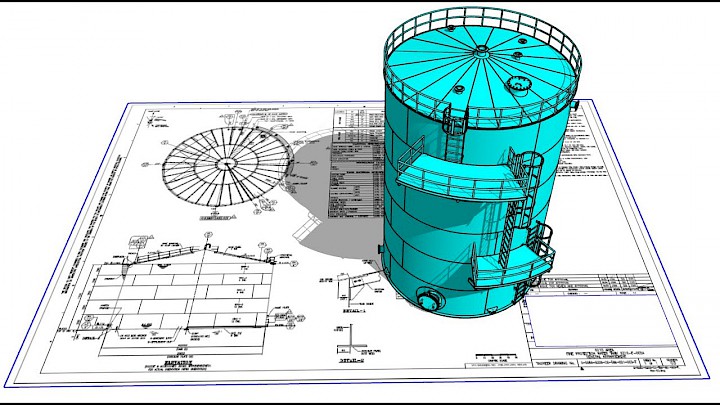A Step-by-Step Consider the Setup Process of Welding Assessment Techniques
Welding inspection is a critical procedure that guarantees architectural integrity and security. The installation of assessment techniques includes several methodical actions, each essential to attaining trustworthy outcomes. From preparation and tool selection to conducting aesthetic and non-destructive tests, each stage needs careful interest. Recognizing these procedures can considerably boost quality control in welding tasks. What challenges develop in implementing these techniques, and exactly how can they be properly dealt with?
Comprehending the Relevance of Welding Inspection
Welding evaluation is an essential component of guaranteeing architectural honesty and safety and security in construction and manufacturing processes. This method entails evaluating welded joints for defects, guaranteeing that they satisfy certain criteria and laws. By methodically gauging weld quality, inspectors can identify concerns such as splits, spaces, and insufficient combination, which can jeopardize the toughness and durability of frameworks.
The significance of welding inspection expands past prompt security worries; it assists avoid costly failures and possible threats in the long-term. Efficient evaluation techniques foster compliance with sector requirements, thus enhancing the general dependability of welded elements. Additionally, a durable inspection process adds to preserving the online reputation of builders and producers, as it assures clients of the top quality of their jobs. Ultimately, recognizing the value of welding assessment is essential for advertising risk-free construction techniques and ensuring the long life of necessary infrastructure and items.
Selecting the Right Devices for Evaluation
When selecting the proper devices for evaluation, it is important to consider the details requirements of the welding procedure and the products involved. Different examination methods, such as visual, ultrasonic, and radiographic screening, demand distinct tools tailored to their special demands. For aesthetic examinations, tools like amplifying calipers and glasses are essential for assessing weld high quality. Ultrasonic screening calls for customized equipment with the ability of transferring and getting audio waves to detect internal defects. Radiographic testing, on the various other hand, uses X-ray or gamma-ray resources along with delicate movie or electronic detectors to disclose inconsistencies.
Additionally, individual safety devices (PPE) is necessary to ensure the security of examiners during examinations. Selecting the right devices not just boosts the precision of assessments however additionally contributes to the general honesty and security of the welding job. Consequently, a thorough understanding of offered tools and their applications is vital for reliable welding inspection.
Planning for the Inspection Process
Prior to launching the evaluation process, it is important to develop a detailed strategy that details the range and objectives of the assessment. This strategy should consist of certain standards that define what makes up acceptable high quality in the welding work being evaluated. Identifying the relevant codes and requirements is vital, as they will lead the examination standards and approaches.
Additionally, workers associated with the evaluation must be sufficiently trained and accredited in welding assessment strategies to guarantee reliability and precision. A checklist can be useful in organizing the different elements of the inspection, ranging from tools preparedness to environmental problems that can affect the assessment.

Logistical factors to consider such as organizing, readily available resources, and communication in between team members must be attended to. By preparing systematically, inspectors can improve the efficiency of the assessment and guarantee that all important factors are appropriately considered before waging the assessment itself.
Carrying Out Visual Evaluations

Performing aesthetic inspections is an important action in the welding examination procedure, calling for careful preparation to ensure efficient assessment. Inspectors must be familiar with crucial issue signs that can signify potential issues in weld top quality. By concentrating on these aspects, one can boost the total integrity of the inspection outcomes.
Preparing for Visual Examination
Visual inspection works as a critical very first step in the welding inspection procedure, guaranteeing that any kind of prospective issues are identified early (API 650 Welding Inspection). Correct preparation is vital for efficient aesthetic assessment. Assessors should begin by assessing pertinent documentation, consisting of welding treatments and specifications, to understand the job requirements. They need to collect necessary tools, such as multiplying glasses, flashlights, and appropriate individual safety equipment (PPE) A thorough exam of the examination area is important; inspectors must confirm it is tidy and free of blockages. Additionally, it is very important to develop ideal lights problems to improve presence of welds. By taking these primary actions, assessors can produce a setting look at here for recognizing disparities and assuring the honesty of the bonded structures
Secret Issue Indicators
A complete understanding of key flaw indicators is essential during visual examinations to guarantee the high quality and security of welded joints. Examiners ought to focus on particular signs such as cracks, porosity, undercuts, and insufficient blend. Fractures might look like sharp lines and can endanger structural stability. Porosity materializes as small holes that can damage weld toughness. Undercuts, which are grooves along the weld edge, can result in anxiety focus. Insufficient blend shows that the weld metal did not correctly bond with the base material, causing a weak joint. By methodically determining these issues, assessors can identify compliance with market criteria and boost the total reliability of welded structures, eventually adding to safer functional problems.
Applying Non-Destructive Examining Strategies

Countless non-destructive testing (NDT) techniques are indispensable to assuring the stability of bonded frameworks without jeopardizing their capability. These methods permit inspectors to assess weld quality and find defects without triggering damages to the materials being checked. Usual NDT techniques include ultrasonic testing, radiographic testing, magnetic particle screening, and color penetrant testing. Each technique offers a specific objective, addressing different types of defects such as splits, porosity, or insufficient blend.
Carrying out NDT strategies needs an organized method, beginning with selecting the ideal approach based upon the products and the nature of the weld. Educating employees in these techniques is essential for accurate results. Furthermore, developing clear treatments and criteria guarantees consistency throughout the assessment process. By incorporating NDT right into the welding assessment process, companies can enhance the integrity of their products while lessening possible risks related to structural failures. This positive strategy eventually adds to keeping safety and high quality criteria in bonded building and constructions.
Evaluating and documenting Evaluation Outcomes
Efficient documents and evaluation of assessment results are important parts of the welding inspection procedure. Exact documents of evaluation searchings for offer as a reference for quality control and conformity with market criteria. API 650 Welding Inspection. Examiners must make use of digital platforms or organized kinds to log details such as the kind of weld, evaluation methods used, and any type of like it inconsistencies identified throughout the evaluation
As soon as data is gathered, comprehensive analysis is crucial. This includes contrasting outcomes against developed standards to determine trends or reoccuring problems. Statistical devices might be utilized to measure flaws and analyze their influence on general weld high quality.
Effective communication of searchings for to relevant stakeholders is essential. Summaries and records must be clear and concise, highlighting crucial understandings and recommendations for restorative activities. By systematically documenting and examining evaluation outcomes, organizations can cultivate continual enhancement in welding methods and enhance product honesty.
Often Asked Concerns
What Certifications Are Required to End Up Being a Welding Assessor?
To come to be a welding examiner, one generally requires relevant accreditations such as AWS CWI, along with experience in welding practices, knowledge of welding codes, and effectiveness in assessment strategies to assure quality and safety and security standards.
How Typically Should Welding Inspections Be Performed?
Welding inspections ought to be conducted regularly, generally after each weld is finished, and periodically during projects. Variables such as job complexity, market requirements, and regulative needs can affect the regularity of these inspections.
What Is the Cost of Welding Inspection Providers?
The cost of welding examination services differs substantially based on variables such as task dimension, place, and complexity. Generally, rates vary from $100 to $150 per hour, with extra costs for specialized testing and qualifications.
Exist Certifications for Welding Inspectors?
Yes, there are different qualifications for welding inspectors, consisting of those used by the American Welding Society (AWS) and the International Institute of Welding (IIW) These accreditations assure examiners have the essential skills and knowledge for effective assessments.

Just how Do I Pick an Assessment Company?
To choose an evaluation company, one ought to examine credentials, experience, market track record, and consumer testimonials. In addition, contrasting service offerings and pricing can assist guarantee the selected supplier fulfills particular job needs efficiently.
Furthermore, personnel involved in the assessment needs to be appropriately educated and certified in welding inspection strategies to guarantee integrity and accuracy. Carrying out aesthetic examinations is a vital step in the welding examination process, requiring mindful preparation to guarantee effective assessment. Aesthetic evaluation offers as an important initial step go now in the welding evaluation process, assuring that any prospective flaws are determined early. Efficient documents and analysis of evaluation results are crucial parts of the welding evaluation procedure. Welding inspections ought to be performed regularly, typically after each weld is completed, and regularly throughout tasks.